CFD Simulations and Moving Geometries
CFD simulations with moving geometries are often a big challenge. Especially if the geometry does not rotate on a fixed axis. These kind of cases can often be approximated by creating a cylinder for an MRF approach. Unfortunately this is not always possible and also requires additional engineering time. At MantiumCAE more and more unconventional approaches are used to tackle these issues.
Here are some examples showcasing how using transient simulations with moving geometries can provide valuable information which could not have been obtained otherwise.
DRS Rear Wing:
| Geometry A | Geometry B |
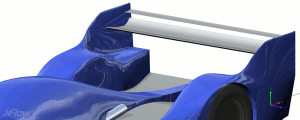 |
 |
 |
 |
A more detailed look at the results shows will reveal more:
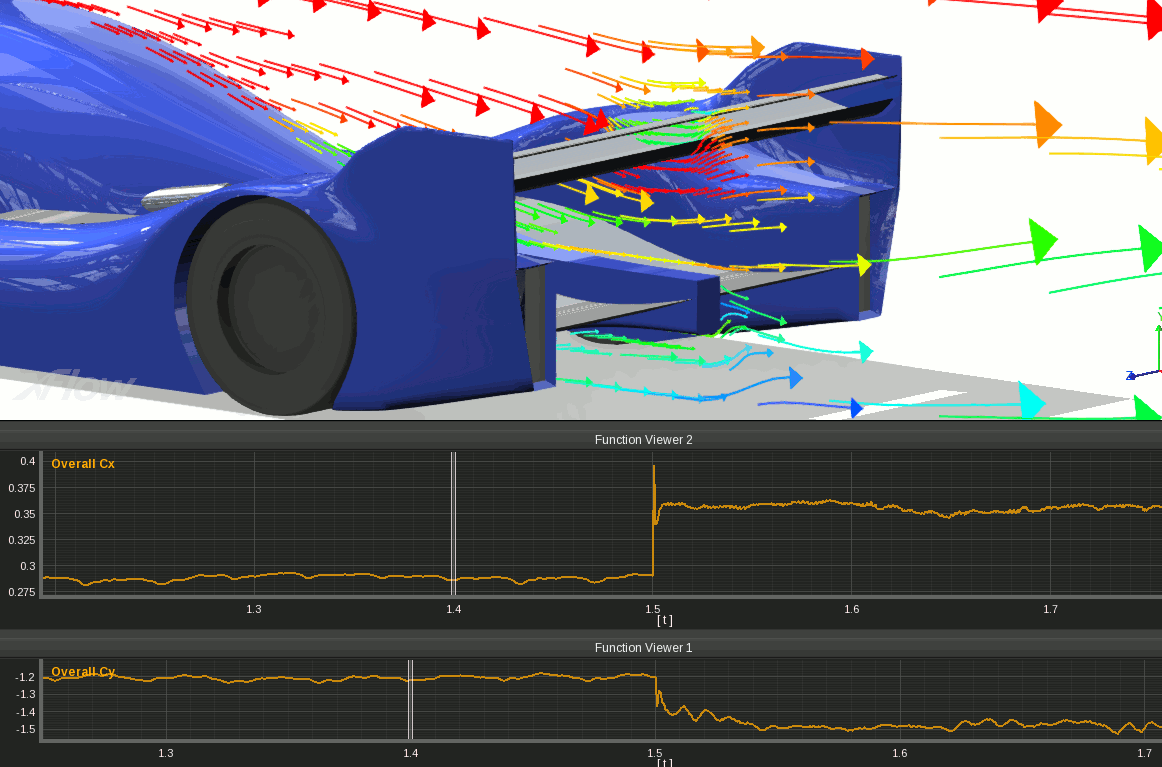
Geometry A
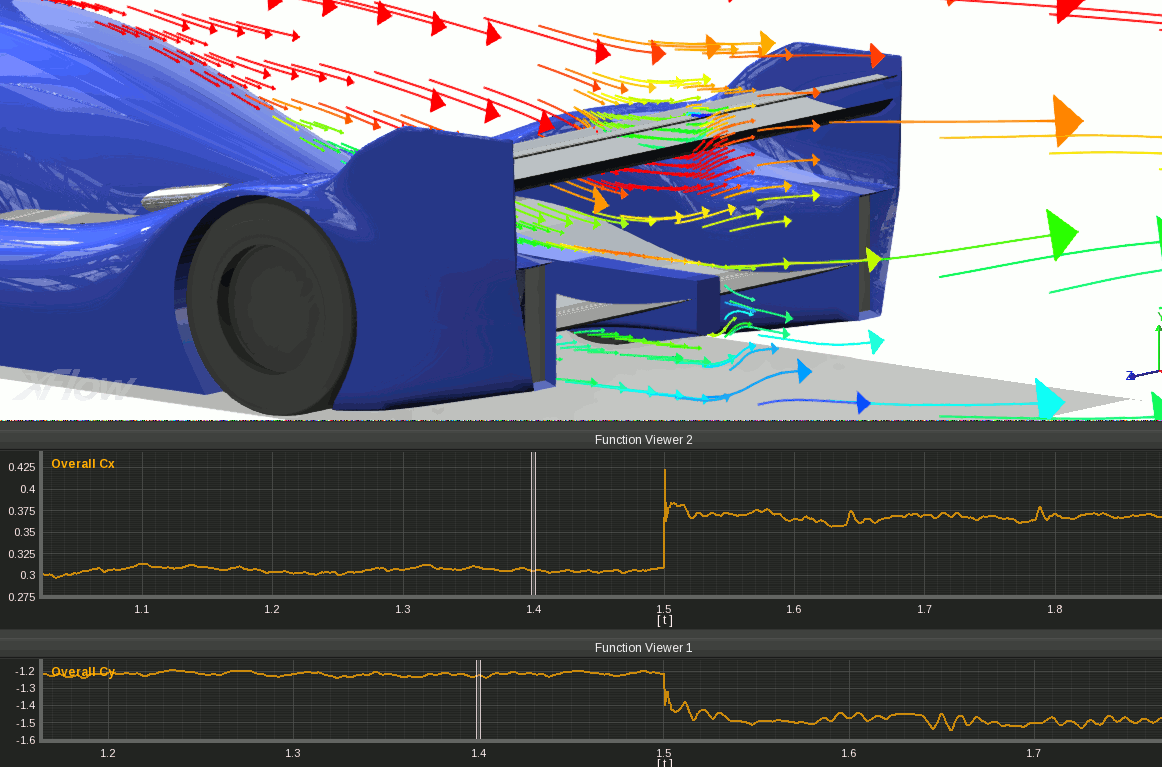
Geometry B
Looking at the overall forces shows that this simulation approach helps to understand how long it takes for the wing to create its additional downforce (here Cy) after closing. In this case Wing B is clearly faster. Just using two steady state simulations simulating the opened and closed configuration would not have revealed this.
Flying Car:
| Geometry A | Geometry B |
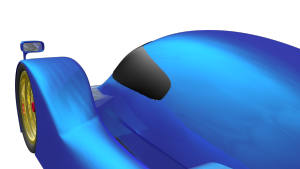 |
 |
 |
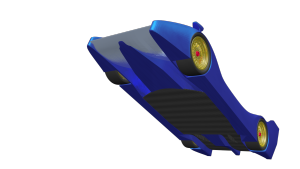 |
Car A seems to like going into the air:
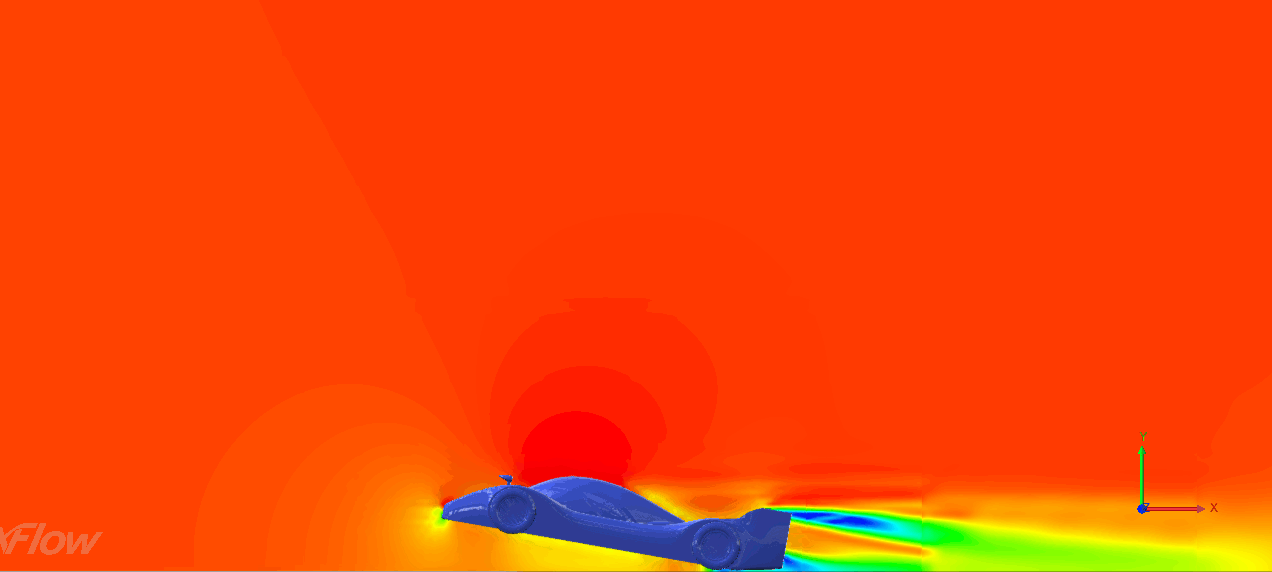
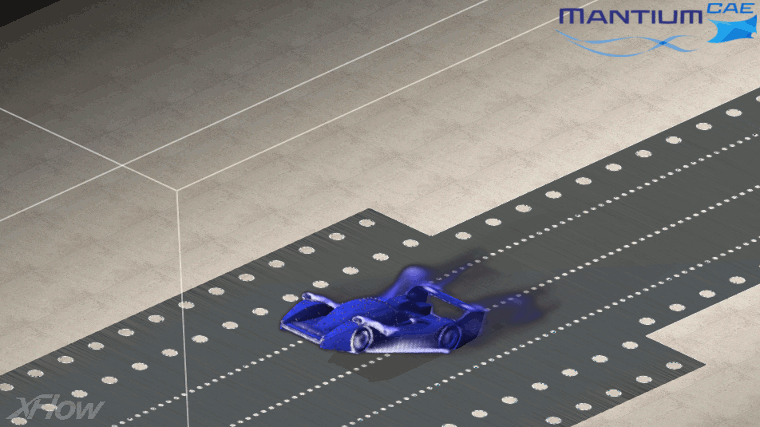
Car B rotates back towards the ground after a short while:

If you are interested in an aerodynamic consulting project possibly containing complex moving geometries, please contact us.